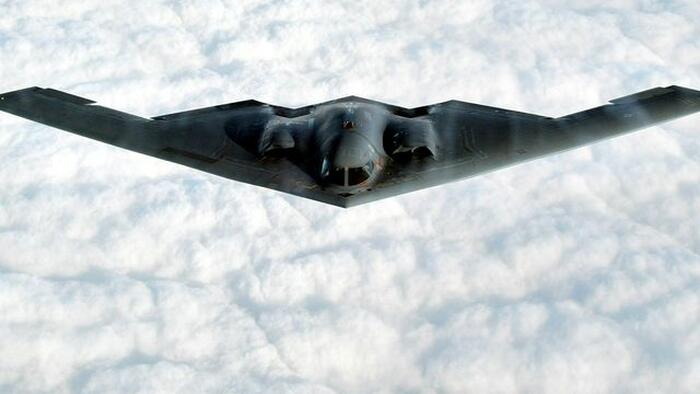In a significant military operation, the United States deployed B-2 stealth bombers early Thursday morning to target Houthi positions in Yemen. This marked the first instance of the B-2s being utilized in combat over Yemen since the escalation of conflict affecting Red Sea shipping over a year ago. The bombings included strikes on underground bunkers used by the Houthis, which some analysts view as a potential signaling move ahead of anticipated Israeli military operations against Iran. This action drew attention for its implications regarding U.S. support for Israel amid rising tensions in the region, especially given the nature of the targets at which the B-2 bombers were directed.
According to reports, the strikes were seen as a warning directed at Iran. Although the extent of the damage caused by the bombings remains uncertain, the operation highlighted the rarity of B-2 bombers being employed in recent military actions. U.S. Defense Secretary Lloyd Austin characterized the attack as demonstrating the United States’ capabilities in targeting deeply buried, fortified facilities that adversarial forces utilize to shield military assets from aerial assault. Austin confirmed that the targets successfully struck included five hardened underground arms storage facilities in regions controlled by the Houthis, showcasing a strategic focus on undermining Houthi military infrastructure.
The recent military operation reflects broader strategic considerations regarding U.S. willingness to confront proxy forces affiliated with Iran, particularly those like the Houthis, who have shown increasing hostility toward U.S. allies in the region. Any potential Israeli actions against Iran might further necessitate the use of advanced U.S. weaponry designed to penetrate hardened targets. Specifically, the B-2’s capabilities, including its ability to deploy the Massive Ordnance Penetrator, position it as a critical asset in any missions aimed at Iranian nuclear facilities such as Natanz or Fordo.
Despite these military actions, there are indications that the Pentagon’s approach to countering the Houthi threat may be perceived as delayed. Over the past year, the Houthis have engaged in relentless assaults on shipping in the Red Sea, notably targeting more than 80 merchant vessels with drone and missile strikes. U.S. naval forces have also faced direct threats from Houthi-operated missile systems, raising concerns about the readiness and operational safety of American naval assets in the region. Analysts speculate that there could have been covered-up incidents of U.S. military vessels being struck, adding layers of complexity to the current maritime security scenario.
The B-2s employed in the latest strikes operated from Whiteman Air Force Base in Missouri, indicating a significant logistical commitment to the operation. While prior air offensives against the Houthis by the U.S. and Israel have occurred, they have not substantially curtailed the Houthis’ military capabilities. In fact, this persistence may have strengthened their resolve to retaliate against perceived aggressors, particularly in the context of ongoing hostilities related to the Gaza conflict. The efficacy of the B-2’s involvement remains to be seen, as the Houthis continue to demonstrate resilience in their operations.
Commentary surrounding the military engagement highlights a troubling trend where U.S. actions in Yemen are conducted without explicit Congressional authorization. Independent journalist Michael Tracey noted that for almost a year, the U.S. has been conducting bombing campaigns in Yemen under the guise of supporting Israeli interests, yet these actions seem to evade significant political scrutiny in the current presidential campaign atmosphere. This situation raises broader questions about the role of the U.S. in Middle Eastern conflicts, the accountability of military engagements, and the long-term implications of continued operations against regional proxies affiliated with Iran.

